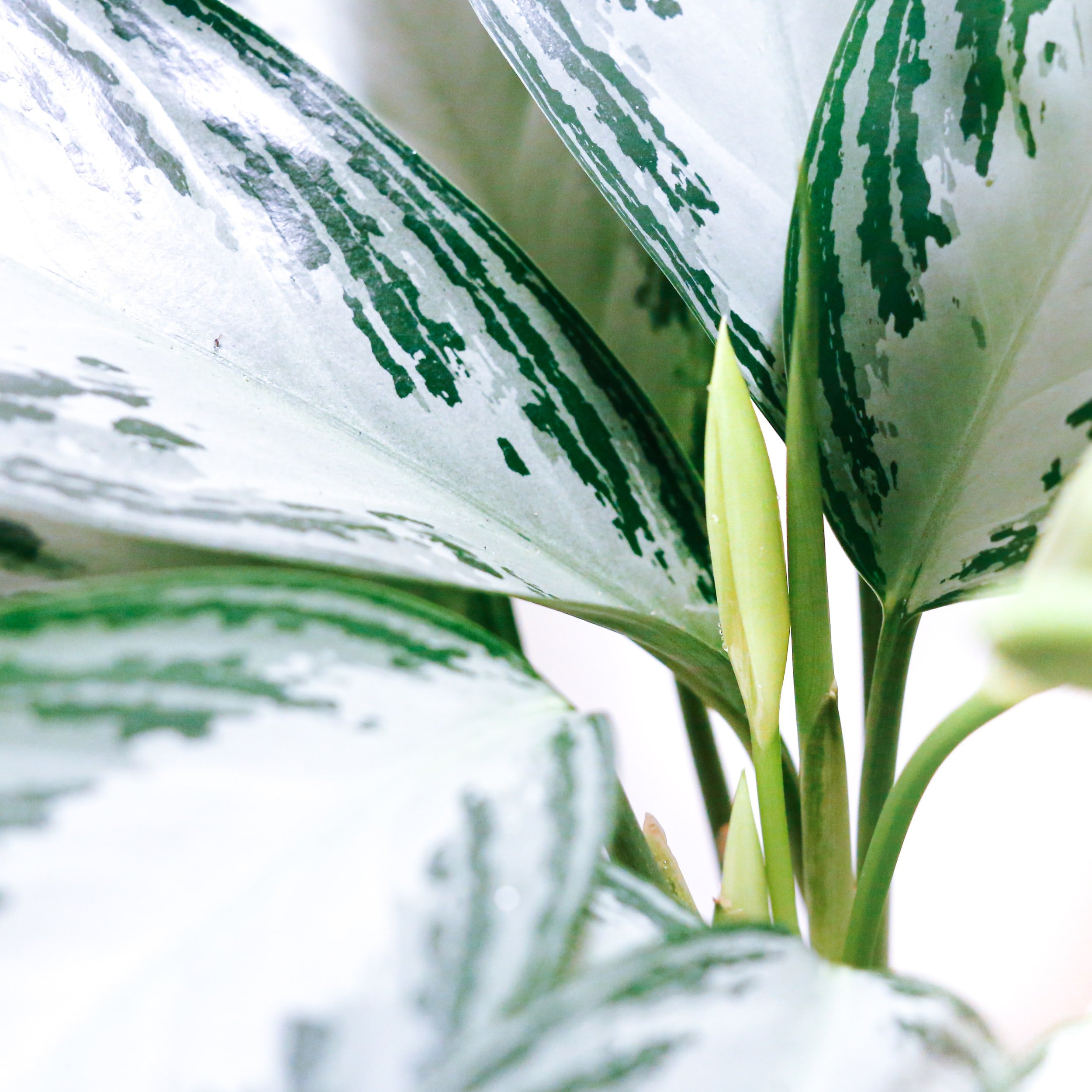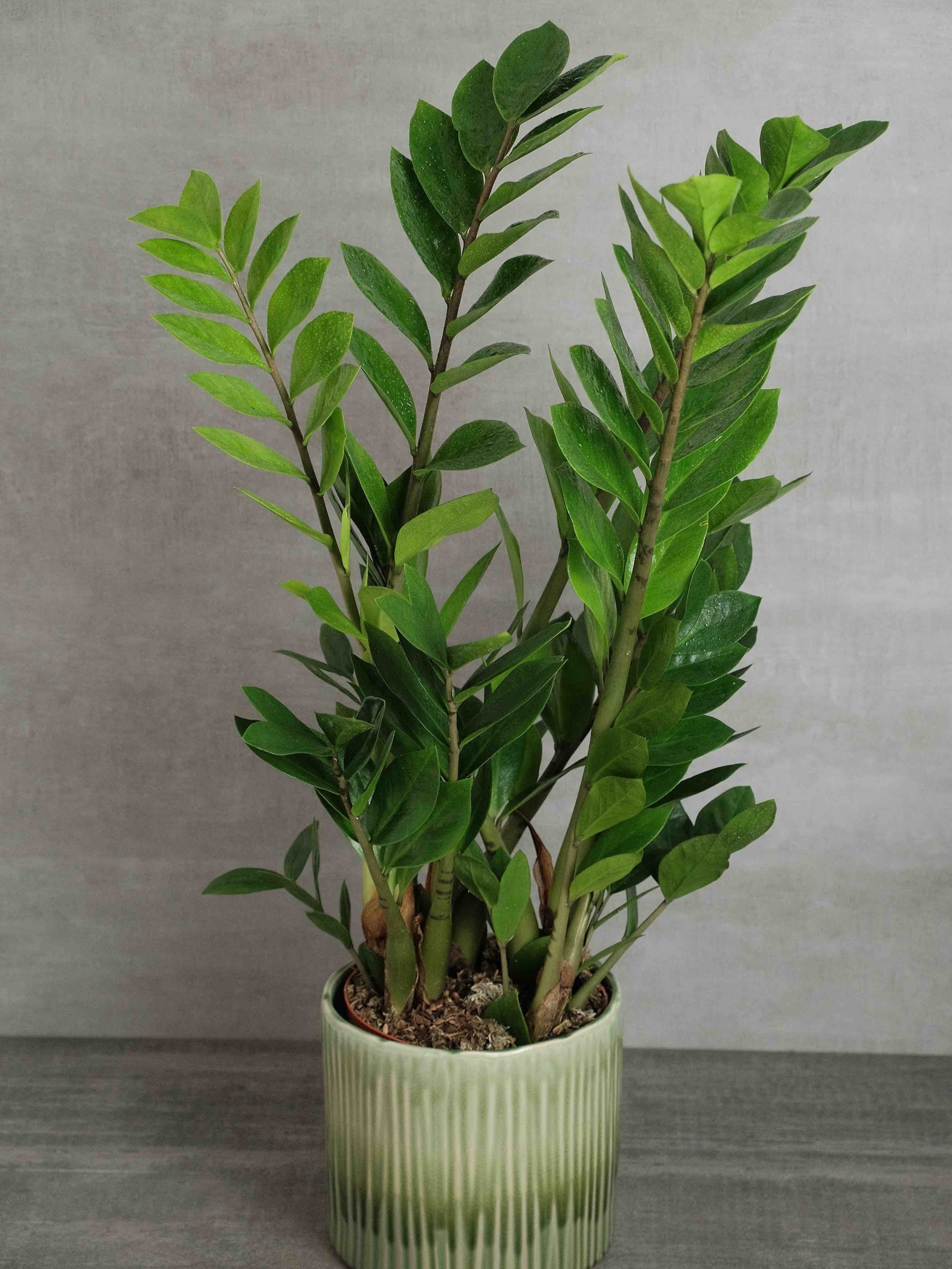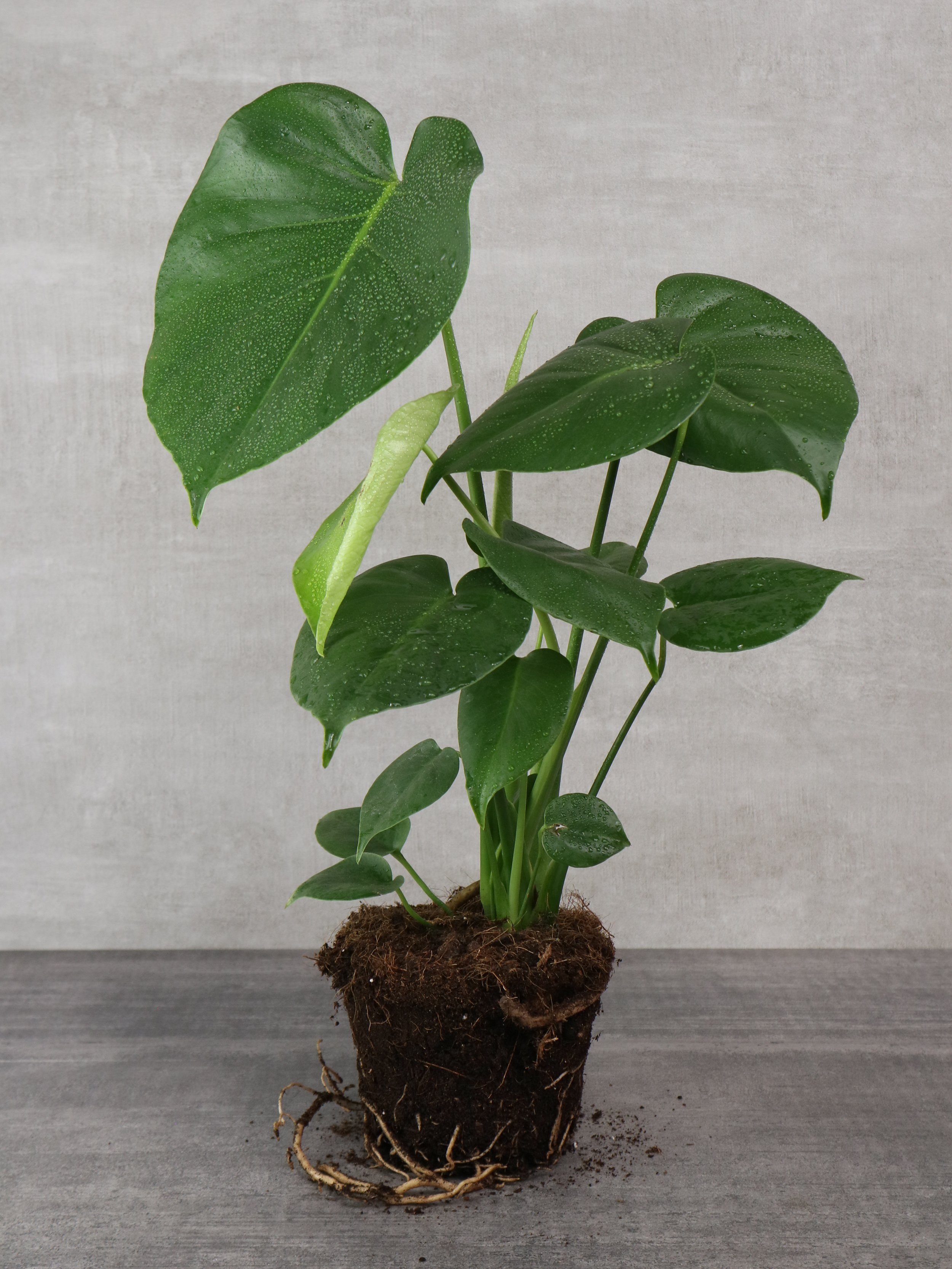Plant Profile
Aglaonema
a.k.a. Chinese Evergreen
Originally from the rainforests in south-east Asia, the Aglaonema is a low maintenance house plant commonly known as the Chinese Evergreen. Loved for their patterned, bright leaves Aglaonema’s are hugely popular indoor houseplants.
There are a wide variety of Aglaonemas to choose from and due to their easy-going nature they are a great choice for first time plant parents or those who don’t necessarily have the ‘ideal’ conditions for houseplants as they easily adapt to their surroundings.
Top Tips
✔ Cutting and removing the flowers from the Aglaonema will help the plant to instead focus its energy on growing foliage.
✔ Rotate the Aglaonema every week to encourage even growth and to help the plant keep a good shape.
✔ Varieties with darker leaves are more tolerant to lower light, while those that are lighter green need a brighter position.
Plant Care
-
The green varieties of Aglaonema can tolerate lower light levels, whereas, the variegated varieties thrive in brighter, indirect light. However, Aglaonema should never be positioned in direct sunlight as this can burn the leaves.
-
The Aglaonema likes moist soil but it should never be allowed to become soggy. Allow the top soil to dry out between waterings. Water from beneath if possible, and aerate the soil before watering.
-
Although Aglaonema can tolerate regular humidity levels, the plant will appreciate being misted once a week.
-
The Aglaonema does not require much food. Use a diluted liquid fertilizer once a month during Spring /Summer. Don’t fertilize in the winter.
-
Normal room temperatures, between 18 - 24°C, are fine for Aglaonema. However, the plant should be kept away from cold drafts and radiators etc.
-
This plant is toxic if consumed so keep away from young children and pets.
-
Aglaonema can be propagated easily with stem cuttings. Simply select and cut a stem from the mother plant that is several inches long. Apply rooting hormone to the cut edge and then plant the cutting into soil, make sure to keep the soil moist and after a few weeks the cutting should develop its own roots.
-
Aglaonema tend to grow quite slowly so it will take a while for them to outgrow their pots. When the plant becomes root bound or stops growing it is time for it to be repotted, it is best to repot the plant during the spring.




Quick plant check up
Brown Leaf Spots
This is likely a result of sun damage, try to find a shadier spot for the plant.
Yellowing Leaves
This will be due to the plant either being overwatered or temperatures being too cold. Allow the plant to dry out between waterings and make sure to keep it away from cold drafts.
Droopy leaves
Plant is dehydrated or root bound.



